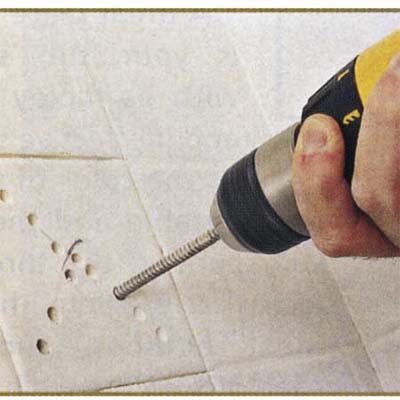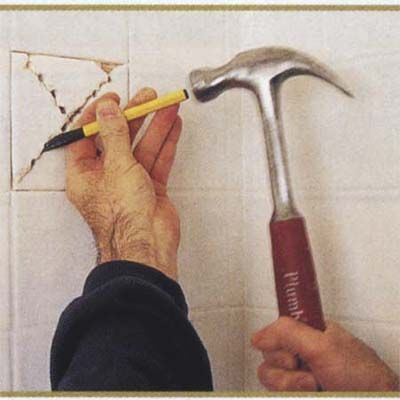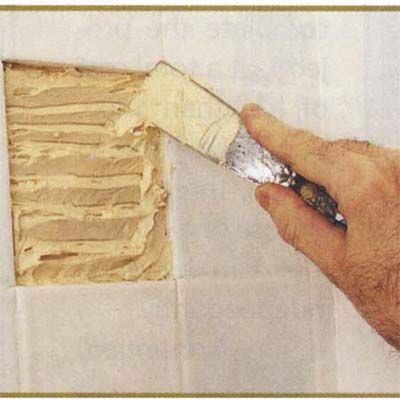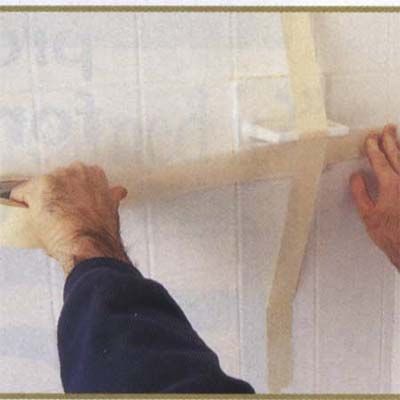We may be compensated if you purchase through links on our website. Our team is committed to delivering honest, objective, and independent reviews on home products and services.
Project details
Skill
Cost
Estimated Time
A well-placed soap dish keeps soap dry and accessible during a bath or shower. Installing one is a relatively simple project that most homeowners can complete in a few hours. However, working with tiles requires some care and precision to avoid damaging the surrounding area. Our guide walks you through how to install a soap dish, whether you’re working with tiles or fiberglass.
Required Tools
Here are the tools you’ll need for the project.
 Masonry bit – 1/4-inch
Masonry bit – 1/4-inch Drill/driver
Drill/driver Hammer
Hammer Nailset
Nailset cold chisel – 1/4-inch
cold chisel – 1/4-inch Putty knife
Putty knife Torpedo level
Torpedo level Grout saw
Grout saw
Step 1: Choose the Right Location for Your Soap Dish

The best location for a soap dish is typically high on the wall, slightly to the side of the showerhead (about two or three tiles over). This keeps the dish out of direct water spray, preventing your soap from turning into mush.
When choosing the location, consider these factors:
- Accessibility: Make sure the dish is within easy reach for all users.
- Existing fixtures: Avoid interfering with other shower accessories or plumbing.
- Height: Aim for a spot about 16–20 inches (four or five tiles) below the showerhead.
- Water exposure: Position the dish away from direct water streams.
Step 2: Remove Tile(s) for Soap Dish Installation

If you’re installing a soap dish on a tiled wall, you must remove one or more tiles to create space for the new fixture.
- Put on appropriate eye protection to guard against flying debris.
- Use a grout saw or awl to carefully scratch out the grout around the chosen tile.
- Create an X-shaped pattern of small divots across the tile’s face using a hammer and nail set.
- Drill through the tile at these divot points using a 1/4-inch-diameter masonry bit, being careful not to penetrate the wall behind.
- Use a 1/4-inch-wide cold chisel and hammer to carefully crack the tile into pieces.
- Pry out the fractured tile shards with a putty knife or flat pry bar.
- Scrape the wall surface clean of any remaining mortar or adhesive.
Step 3: Apply Tile Adhesive

Once you’ve prepared the space for your new soap dish, it’s time to apply the adhesive. The right adhesive, applied carefully, helps prevent future issues.
Here’s how to properly apply the adhesive:
- Choose a high-quality tile adhesive suitable for bathroom use.
- Use a putty knife to spread a thin, even coat of adhesive—about 1/8 inch—onto the cleaned wall surface.
- Apply a similar layer of adhesive to the back of the soap dish.
- Make sure you have complete coverage on both surfaces to maximize bonding strength.
Step 4: Check for Level and Fill With Grout to Finish Installation

The final steps in installing your soap dish involve securing it in place and checking that it’s properly leveled. Follow these steps to complete the installation:
- Press the soap dish firmly into place, applying even pressure across its surface.
- Secure the dish temporarily with two or three strips of masking tape.
- Check that the dish is perfectly level and adjust if necessary while the adhesive is still pliable.
- Allow the adhesive to dry for 24 hours.
- Remove the masking tape and fill all joints around the soap dish with grout.
- Wipe away excess grout with a damp sponge, being careful not to remove any from the joints.
- Allow the grout to dry overnight before using the shower.
Additional Considerations for Soap Dish Installation
When installing a soap dish, there are a few additional factors to keep in mind.
- Drainage: Look for a dish with built-in drainage holes to prevent water accumulation.
- Material compatibility: Pick a soap dish material that complements your existing bathroom fixtures and finishes.
- Size and style: Choose a soap dish that fits well with your shower’s dimensions and overall bathroom design.
- Weight capacity: Consider the weight of soap bars you typically use and make sure the dish can support them.
Maintenance Tips for Your New Soap Dish
Regular care will extend the life of your soap dish and keep it looking new. Follow these best practices:
- Clean regularly: Wipe down the soap dish weekly to prevent soap scum buildup.
- Inspect periodically: Check for any signs of loosening or damage, especially around the grout lines.
- Keep it dry: After each use, remove excess water from the dish to prevent mold and mildew growth.
- Re-seal grout: Apply a grout sealer annually to protect against water damage and staining.









